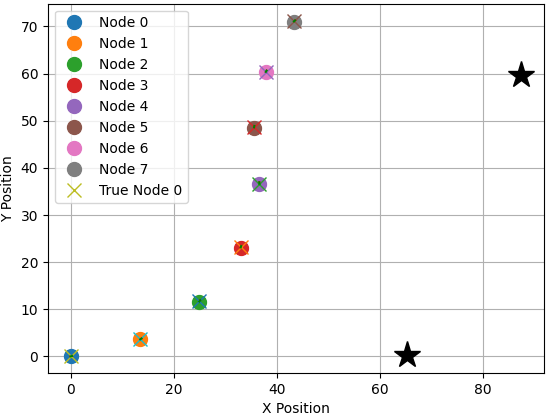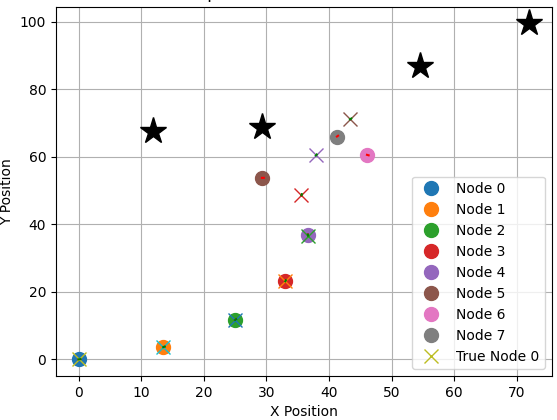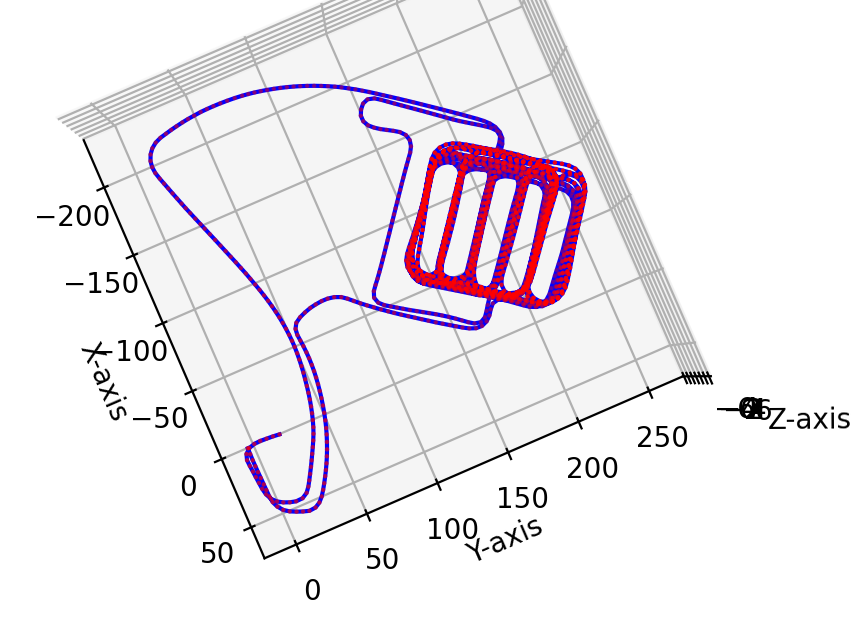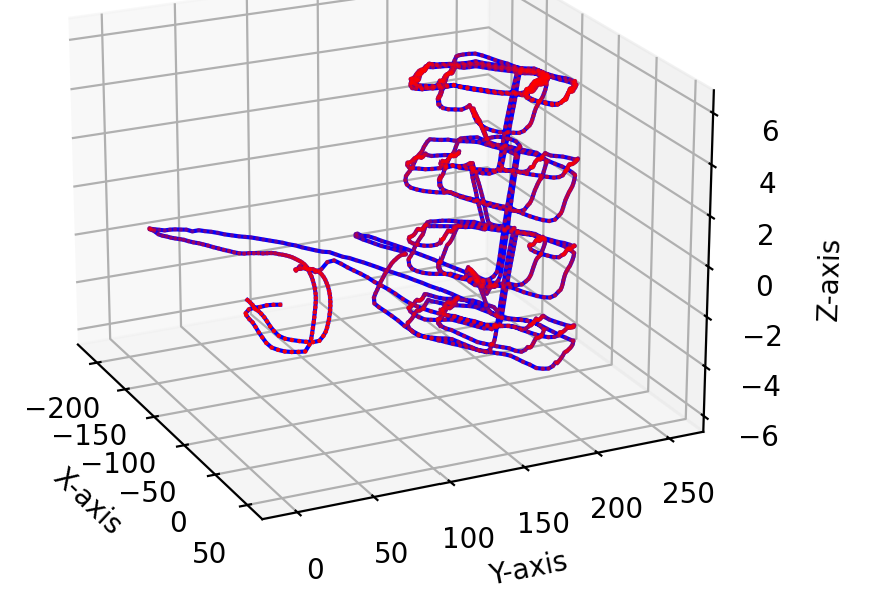This repository contains a Python script (main.py) for simulating 2D GraphSLAM using a grid world environment and a mobile robot. Below are the instructions on how to run the simulation.
Before running the simulation, ensure that you have the required Python libraries installed. You can do this by navigating to the project folder (2D_GraphSLAM) and running the following command:
pip install -r requirements.txt
Once you have installed the required libraries, you can run the 2D GraphSLAM simulation by following these steps:
-
Open a terminal or command prompt.
-
Navigate to the project folder (
2D_GraphSLAM) using thecdcommand:
cd path/to/2D_GraphSLAM
- Run the
main.pyscript:
python main.py
-
The simulation will run, and you will see a visualization of the robot's trajectory and landmark observations. The visualization includes the robot's estimated pose (blue dots), the true pose (green dots), landmark positions (yellow stars), and sensor measurements (red lines).
-
After the simulation completes, you will also see the final state of the GraphSLAM optimization, including the refined pose estimates.
You can customize the simulation by modifying the parameters in the main.py script. These parameters include the world size, the number of landmarks, sensor range, time step, and control inputs. Feel free to experiment with different settings to observe how GraphSLAM performs under various conditions.
Here are some results and visualizations from the simulation:
The experiments conducted revealed that the least-squares optimization method employed in the GraphSLAM algorithm was sensitive to initialization. Noisy initial pose estimates led to significant localization errors. Furthermore, it was observed that as the number of landmarks increased, the performance of the GraphSLAM algorithm, as measured by localization error, deteriorated. More favorable results were achieved with fewer landmarks, suggesting that a higher number of landmarks introduced additional noise into the system that the algorithm struggled to account for. Increasing the number of iterations did not mitigate the adverse effects of having more landmarks on the algorithm’s performance.
If you have any questions or encounter any issues, please don't hesitate to reach out for assistance. Enjoy experimenting with GraphSLAM!



